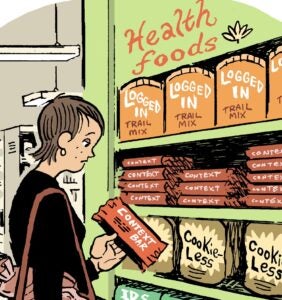“Data-Driven Thinking” is written by members of the media community and contains fresh ideas on the digital revolution in media.
Today’s column is written by Adam Schenkel, senior vice president of global commercial development at GumGum.
There’s nothing like an existential threat to make allies – or frenemies, at least – out of rivals.
The DigiTrust/IAB group, The Trade Desk and others launched unified IDs, driven by the need to solve the multiple identifier challenge and the recognition that without a widely adopted unified ID, Google and Facebook – with their unparalleled troves of first-party data – would gobble up even more of the ad market. In addition to today’s unified ID purveyors, we should probably expect other major data processing companies or any of the telecom companies that now have an ad tech footprint to emerge with new ID initiatives.
Such a glut of unified ID options might seem untenable, even antithetical to the unifying intent. That sense is particularly noticeable at the moment since, among those eyeing the current assemblage of unified ID options, there’s already some bickering over the pros and cons of each, mostly as they relate to ownership, cost and scale of adoption.
But there is no perfect unified ID solution on the table right now – and no indication of one arriving soon.
Any unified ID is more transparent, efficient and valuable to advertisers and publishers and better for the user experience than our current system, where every stakeholder relies on its own proprietary ID. And even five or six coincident unified ID options are better than hundreds of disparate IDs.
Fewer cookie IDs will increase match rates and greatly limit the audience loss that comes from passing IDs down the supply chain and syncing them at each step. It also eliminates the effort associated with maintaining and matching proprietary IDs. All of this saves time, which ops teams can use to develop more forward-thinking strategies. Fewer pixels on the page also means faster page loads and better page performance overall, which increases user engagement. Fewer IDs reduces the inefficiencies, re-syncing processes and impression loss from users refreshing cookies or from expired cookies. In this light, refusing to get on board with one of the existing ID initiatives looks like self-sabotage.
As industry stakeholders, we all have decisions to make about which ID initiative delivers the greatest upside for our companies – but we must choose one of the unified IDs available. The only way the ID initiatives will work to our collective advantage is if they have broad adoption. Any unified ID will only deliver on its promise if buyers and sellers agree to transact on it.
Limited adoption is analogous to low voter turnout in an election: Staying away from the polls won’t make a perfect candidate appear. There will be winners and losers regardless of how many votes are cast.
The time is now for companies to choose an ID that fits their goals. Narrowing the ID field will help communicate our disparate priorities, provide industrywide focus on ID-related priorities and encourage meaningful progress toward our goals.
Narrowing the field of unified IDs will create more business, transactions and overall revenue for all involved. The benefits of fewer cookies to process and match will reach everyone who is on board with one of these IDs. Even a leading entrant in the unified ID race like The Trade Desk understands that the goal really isn’t to get every stakeholder on board with one single unified ID, but rather to move from countless IDs to a smaller, more manageable set. Moving from many IDs to only one is impractical, but moving to a few IDs is universally beneficial.
And if companies make the leap to a unified ID and for some reason regret it, they can, for the small cost of re-syncing their users, always switch unified ID allegiances or just go back to relying on their proprietary ID until the cookie is inevitably eliminated.
There’s really no telling how much longer cookies will even be around, so we all should just embrace one of the unified ID options so that we can use cookies efficiently and profitably while we still can.
Follow GumGum (@GumGum) and AdExchanger (@adexchanger) on Twitter.













